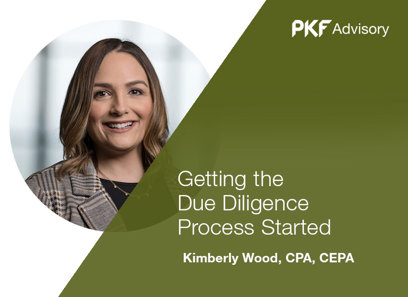In-Depth Guide to Understanding Purchase Price Allocation
A Comprehensive Guide to Understanding Purchase Price Allocation in Mergers and Acquisitions
Recognizing Purchase Price Allocation (PPA) is essential in the world of mergings and acquisitions, as it directly impacts economic coverage and calculated decision-making. By precisely distributing the purchase rate amongst recognizable assets and liabilities, companies can make sure conformity with audit criteria while enhancing their financial end results.
Meaning of Purchase Price Allocation

The PPA procedure generally starts with the recognition of the acquisition date, after which the acquirer needs to establish the overall acquisition rate. This total includes not only money settlements however additionally any contingent consideration, stock transfers, and obligations thought. The following step entails allocating this purchase price to the fair value of each recognizable property and liability, which can consist of property, equipment, intellectual residential or commercial property, and various other intangible properties.
Furthermore, any kind of excess acquisition cost past the fair worth of recognizable internet properties is categorized as goodwill. Exact PPA is necessary as it impacts monetary coverage, tax obligation effects, and future earnings projections. By sticking to relevant accounting criteria, such as IFRS 3 or ASC 805, business ensure conformity and openness in monetary reporting, which is important for stakeholders and financiers.
Relevance of PPA in M&A
Accurate purchase cost allotment (PPA) plays a significant role in mergers and purchases, affecting different facets of the deal's economic and functional end results. Appropriately performed PPA makes certain that the acquisition price is suitably distributed amongst the identifiable properties acquired and liabilities thought, giving a clear image of the investment's worth. This allocation is critical for monetary coverage and compliance with accounting standards, as it directly affects the acquirer's equilibrium sheet and revenue statement.
Additionally, PPA has effects for tax considerations. By precisely identifying abstract possessions and their respective worths, firms can enhance amortization schedules and tax obligation deductions, eventually affecting their money flow. Furthermore, a well-structured PPA can enhance the understanding of synergies prepared for from the transaction, assisting calculated decision-making post-acquisition.
In the affordable landscape of M&A, reliable PPA can additionally help with settlements, as it provides clearness and transparency relating to the appraisal and worth of the target business. This accuracy can promote depend on amongst stakeholders and add to smoother combination processes. Eventually, the significance of PPA in M&A can not be overstated, as it lays the structure for sound financial monitoring and tactical development campaigns complying with the deal.
Key Components of PPA
A comprehensive understanding of the essential parts of purchase cost allotment (PPA) is vital for successfully handling the complexities of mergers and procurements. The key components of PPA consist of the recognition of the acquisition cost, the reasonable value analysis of gotten possessions and obligations, and the succeeding category of these elements.
At first, the acquisition cost stands for the total consideration transferred by the acquirer, including cash, supply, and other kinds of compensation. Next, the fair value of gotten identifiable possessions and responsibilities should be identified, which typically encompasses concrete assets such as building and devices, along with abstract possessions like hallmarks, licenses, and consumer relationships. Accurate valuation is crucial, as it impacts monetary coverage and tax obligation implications.
Furthermore, liabilities thought in the transaction, including contingent liabilities and debt, have to be analyzed at reasonable value. The distinction in between the total acquisition rate and the reasonable values of recognizable properties and obligations results in a good reputation, which reflects the premium paid for harmonies and abilities not separately identifiable. Recognizing these components makes sure compliance with accountancy requirements and improves tactical decision-making throughout the M&A process.
Methodologies for PPA
Numerous techniques are utilized to perform purchase price allowance (PPA), each offering unique techniques to valuing acquired possessions and obligations - Understanding Purchase Price Allocation in Mergers and Acquisitions. One of the most typical techniques consist of the cost method, market approach, and income method
The cost approach concentrates on the replacement expense of the assets, approximating what it would require to recreate the asset in its present problem. This read the article method is particularly helpful for substantial assets, such as home and tools.

The income technique, on the other hand, emphasizes the here and now value of future capital expected to be generated by the possessions. This technique is specifically relevant for abstract properties, such as licenses and hallmarks, where future performance can be forecasted.
Choosing the appropriate technique rests on the nature of the acquired possessions, market problems, and the certain context of the transaction. Using a combination of these methodologies might also generate an extra detailed sight of the fair worth of the possessions and responsibilities included.
Best Practices for Reliable PPA
Exactly how can companies guarantee a smooth purchase cost allocation (PPA) process? Carrying out best methods is crucial for accomplishing precision and compliance. Initially, companies get more need to establish a clear structure that defines functions and duties throughout the PPA process. This includes determining essential stakeholders-- such as financing, lawful, and functional teams-- that will certainly add to information collection and evaluation.
Second, Learn More organizations need to collect comprehensive and trustworthy information connected to the acquired assets and obligations. This includes carrying out detailed due persistance to assess reasonable value and bookkeeping effects accurately. Utilizing third-party assessment experts can enhance objectivity and ensure adherence to relevant accounting standards.
Moreover, it is vital to keep open lines of interaction amongst all events entailed. Routine meetings can help with the exchange of insights and address any potential discrepancies early while doing so.
Finally, organizations should document all presumptions, methodologies, and searchings for thoroughly. This not only aids in compliance yet additionally acts as a reference for future acquisitions - Purchase Price Allocation in Mergers and Acquisitions. By complying with these finest practices, companies can improve the efficiency and performance of their PPA procedure, ultimately sustaining much better economic coverage and strategic decision-making
Verdict
In final thought, Purchase Price Allocation (PPA) is a crucial process in mergings and procurements that guarantees precise evaluation of identifiable possessions and responsibilities. Effective PPA not only enhances monetary coverage and tax obligation implications however likewise reinforces the critical foundation of the obtaining entity.